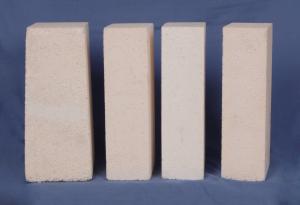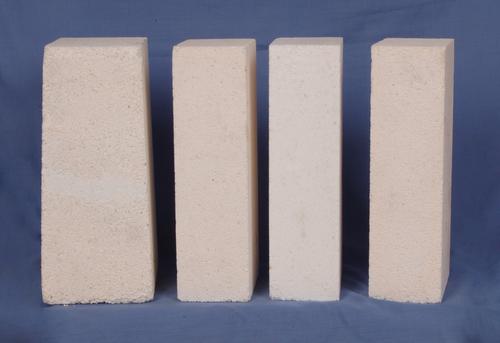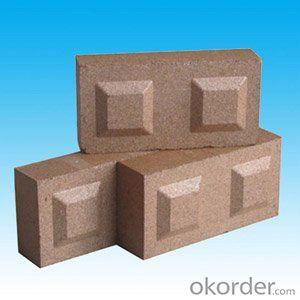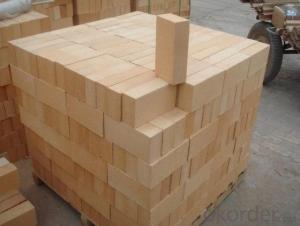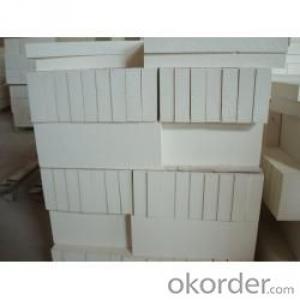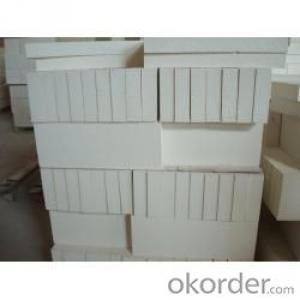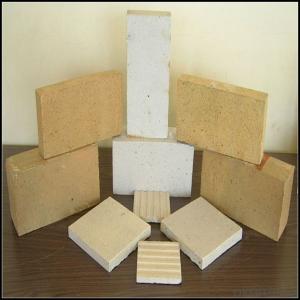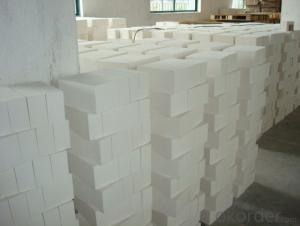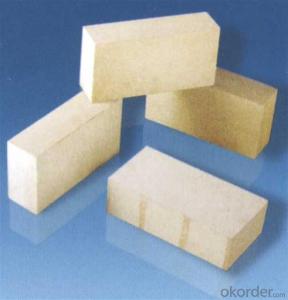Alumina Bubble Insulating Fire Brick
- Loading Port:
- China Main Port
- Payment Terms:
- TT OR LC
- Min Order Qty:
- -
- Supply Capability:
- -
OKorder Service Pledge
Quality Product, Order Online Tracking, Timely Delivery
OKorder Financial Service
Credit Rating, Credit Services, Credit Purchasing
You Might Also Like
General Information
CMAX insulating firebricks are classified under temperature between 1300℃ to 1700℃, manufactured from high purity alumina clay.
Feature
Light weight and low thermal conductivity
Low heat storage
Low iron and impurities
High thermal shock resistance
Application
CMAX insulating firebricks can be used as a hot face lining directly exposed to the heat or as a backup insulation layer in iron and steel mills, non-ferrous foundries, petrochemical, ceramic, glass.
- Q: Can insulating fire bricks be used in refractory lining for steelmaking?
- Yes, insulating fire bricks can be used in refractory lining for steelmaking. Insulating fire bricks are made from lightweight ceramic materials, which have excellent thermal insulation properties. This makes them suitable for use in high-temperature applications such as steelmaking, where maintaining a consistent temperature is crucial. Insulating fire bricks can help to reduce heat loss, improve energy efficiency, and provide insulation against the extreme temperatures experienced in steelmaking processes. Additionally, these bricks are resistant to thermal shock, which is important for withstanding rapid temperature changes during steel production. Therefore, using insulating fire bricks in refractory lining for steelmaking can help to optimize the performance and efficiency of the steelmaking process.
- Q: Are insulating fire bricks suitable for outdoor applications?
- No, insulating fire bricks are not suitable for outdoor applications as they are not designed to withstand the harsh weather conditions and exposure to moisture.
- Q: Can insulating fire bricks be used in refractory castings?
- Indeed, refractory castings can incorporate insulating fire bricks. Due to their lightweight nature and exceptional insulation abilities, insulating fire bricks are ideal for tasks that demand thermal insulation. Such tasks include the creation of linings in furnaces, kilns, and other equipment that operates at high temperatures. To achieve thermal insulation and minimize heat loss, insulating fire bricks can be utilized either as a layer or as an element within the refractory casting mixture. Furthermore, their low thermal conductivity aids in reducing energy consumption and sustaining elevated temperatures within the casting.
- Q: What is the typical density of an insulating fire brick?
- The typical density of an insulating fire brick can vary depending on the specific composition and manufacturing process. However, in general, insulating fire bricks have a lower density compared to regular fire bricks. The typical density of an insulating fire brick can range from 0.8 g/cm³ to 1.2 g/cm³. This lower density is achieved by incorporating insulating materials like lightweight aggregates or organic fibers into the brick's composition, which helps to reduce heat transfer and increase thermal insulation properties.
- Q: Can insulating fire bricks be used in contact with molten metal?
- Yes, insulating fire bricks can be used in contact with molten metal. Insulating fire bricks are specially designed to withstand high temperatures and are commonly used in industrial applications where they come into contact with molten metal. These bricks have a high resistance to thermal shock and are able to withstand the intense heat generated by molten metal. Additionally, insulating fire bricks have low thermal conductivity, which helps to minimize heat loss and improve energy efficiency. However, it is important to ensure that the specific type of insulating fire brick being used is suitable for the particular type of molten metal and the temperature range it will be exposed to, as different metals have different melting points and may require more specialized refractory materials.
- Q: Can insulating fire bricks be used in the construction of ovens or kilns for pottery?
- Yes, insulating fire bricks can be used in the construction of ovens or kilns for pottery. Insulating fire bricks are specifically designed to withstand high temperatures and provide excellent insulation properties. They have a low thermal conductivity, which means they can effectively retain heat and prevent heat loss, making them ideal for creating and maintaining high temperatures required in pottery ovens or kilns. Additionally, insulating fire bricks have good resistance to thermal shock, meaning they can withstand rapid temperature changes without cracking or breaking. This makes them a reliable choice for constructing ovens or kilns that need to undergo frequent heating and cooling cycles. Overall, insulating fire bricks are a popular choice in pottery oven or kiln construction due to their thermal insulation properties and durability.
- Q: Can insulating fire bricks be used in brick kilns?
- Yes, insulating fire bricks can be used in brick kilns. They are specifically designed to withstand high temperatures and provide excellent insulation, making them suitable for use in brick kilns where heat retention is crucial.
- Q: Are insulating fire bricks suitable for use in the construction of smelters?
- Yes, insulating fire bricks are suitable for use in the construction of smelters. These bricks are designed to withstand high temperatures and provide excellent insulation properties, making them ideal for lining the walls and floors of smelters. They help to retain heat, reduce energy loss, and protect the structure from extreme heat. Additionally, insulating fire bricks are lightweight and easy to install, making them a preferred choice for smelter construction.
- Q: Can insulating fire bricks be used in ceramic fiber modules?
- No, insulating fire bricks cannot be used in ceramic fiber modules. Ceramic fiber modules are typically made from refractory ceramic fibers, which are lightweight and have excellent insulating properties. Insulating fire bricks, on the other hand, are dense bricks made from refractory materials like clay or silica, and they are not flexible or adaptable like ceramic fiber modules.
- Q: Do insulating fire bricks require any special tools for installation?
- Special tools are necessary for installing insulating fire bricks. Some examples of common tools that may be required are a trowel, masonry hammer, chisel, masonry saw, and a masonry drill with the appropriate bits. These tools are essential for cutting the bricks to the desired shape and size and for creating openings or channels for flues, vents, or other components. Additionally, a mortar mix that can withstand high temperatures is needed to securely hold the bricks in place. To ensure a proper and safe installation, it is crucial to carefully follow the manufacturer's instructions and use the recommended tools.
Send your message to us
Alumina Bubble Insulating Fire Brick
- Loading Port:
- China Main Port
- Payment Terms:
- TT OR LC
- Min Order Qty:
- -
- Supply Capability:
- -
OKorder Service Pledge
Quality Product, Order Online Tracking, Timely Delivery
OKorder Financial Service
Credit Rating, Credit Services, Credit Purchasing
Similar products
Hot products
Hot Searches
Related keywords
